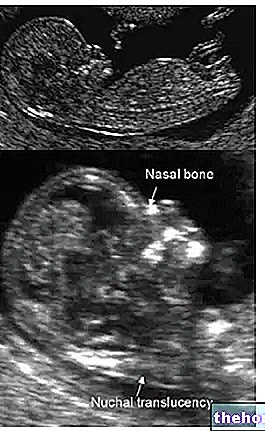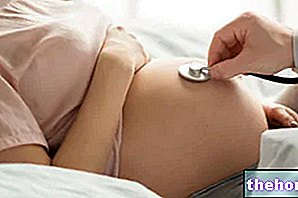Calendar method
The "Ogino-Knaus" method - otherwise known as the "calendar or rhythm method" - is a natural contraceptive strategy based on the theoretical calculation of the potentially fertile days for the woman.
A couple can use the Ogino-Knaus method for two opposite reasons:
- Prevent pregnancy: in such circumstances, the couple will have to abstain from sexual intercourse during the days that, according to the Ogino-Knaus method, are fertile for the woman. Alternatively, the couple can prevent pregnancy by using - in the "at risk" period - other natural contraceptive methods (interrupted coitus, Billings method, symptothermal method, etc.) or barriers (eg male or female condoms, cervical cap, etc.).
- Planning a pregnancy: men and women who want a child should prefer the "fruitful" days to attempt conception.

However, it should be noted that the Ogino-Knaus model is not very reliable as a contraceptive method, given that it presents a very high risk of failure. Theoretically, only women with a perfectly regular menstrual cycle of 28-31 days could use the Ogino-Knaus method to prevent unwanted pregnancy.
Curiosity
The Ogino-Knaus method takes its name from the two doctors K. Ogino and H. Knaus who conceived - albeit at different times and independently - the contraceptive practice.
Key points and principles of the method
What does the Ogino Knaus method consist of?
To simplify the description, we describe the key points considered in the Ogino-Knaus method:
- The woman is not fertile during all days of the menstrual cycle
- Fertility days are not the same for all women
- Menstruation begins about the 14th-16th day after ovulation
- The spermatozoa maintain their fertilizing capacity for 3-4 days inside the female genitals (uterus)
- The egg only lives 12-24 hours
- In an ideal menstrual cycle (28 days), the fertile period is between the 10th and 17th day of the cycle
- To best apply the Ogino-Knaus method it is essential that the woman knows precisely the duration of her menstrual cycle
It should be noted that for many women the duration of the menstrual cycle is very irregular or in any case different from the "ideal" one of 28 days. From what has been said, it is well understood how a woman's fertile period can fluctuate in an absolutely unpredictable way.
How to use the method
Having said that, another question spontaneously arises:
Which are, according to the Ogino-Knaus method, the days when a woman is fertile (therefore "at risk" of pregnancy)?
Since it is almost unlikely that a woman will have absolutely regular menstrual cycles of 28 days, the shortest cycle length and the longest cycle length observed by the woman over 12 months should be taken into account.
That said, it is possible to calculate the potentially fertile days (in which one should abstain from intercourse to avoid pregnancy) according to the "application of two simple formulas (taken from the manual"Contraceptive Technology').
- End of the infertile phase (before ovulation) = duration of the shortest cycle (expressed in days) - 19
- Beginning of the infertile phase (after ovulation) = duration of the longest cycle (expressed in days) - 10
In the period between the first and last day of fertility, the couple who do not want children should abstain from full sexual relations (or adopt different contraceptive measures). Conversely, the man and woman who wish to become pregnant should prefer precisely this. period to attempt conception.
Practical example
To understand...
DATA
A woman in a year has 12 menstrual cycles, of which the shortest lasted (for example) of 26 days and the longest 31
APPLICATION OF THE OGINO-KNAUS METHOD
- Last day of infertility (pre-ovulatory infertile phase): 26-19 = 7
- First day of infertility (post-ovulatory infertile phase): 31-10 = 21
INTERPRETATION OF THE OGINO-KNAUS METHOD
- The woman who wants children should attempt a pregnancy between the 8th and 20th day of her menstrual cycle to have a better chance of the egg being fertilized. In fact, on the 7th day the woman is still infertile; she will be able to conceive starting from the following day (8th). Similarly, 21 indicates the day of return to infertility, so until the previous day (20th) the woman is still fertile.
- The woman who does not want children should abstain from sexual intercourse between the 8th and 20th day of the menstrual cycle.
Benefits
Interpreted with an opposite interpretation, the Ogino-Knaus method is extremely effective for planning a pregnancy. In fact, the theoretical calculation of fertile days ensures that couples who want children have a greater chance of conceiving.
Limits
To make the most of the "contraceptive" effectiveness of the Ogino-Knaus method, it is essential that the woman has an "excellent awareness of her body and that her menstrual cycles are extremely regular.
Before using the Ogino-Knaus method as a first choice contraceptive strategy, it is estimated that the woman must carefully observe the course of her cycles for 12 consecutive months. Only if the cycles are relatively regular (varying from a minimum of 25 to a maximum of 31 days), then, the chances of success of the Ogino-Knaus method to avoid pregnancy are significantly higher.
The Ogino-Knaus method cannot be used during breastfeeding, since the resumption of regular ovulation-menstruation alternation is not immediate.
Contraceptive Reliability
As repeated several times, the Ogino-Knaus method has a very high probability of failure. It is however necessary to underline that, probably, the contraceptive failure of this strategy is due more to an error in the calculation of the fertile days than to an "unreliability of the method itself In fact, especially when the duration of menstrual cycles does not appear regular, the calculation of fertile days becomes uncertain and unclear.
The risk of failure of the Ogino-Knaus contraceptive method varies from 16 to 30%.




























